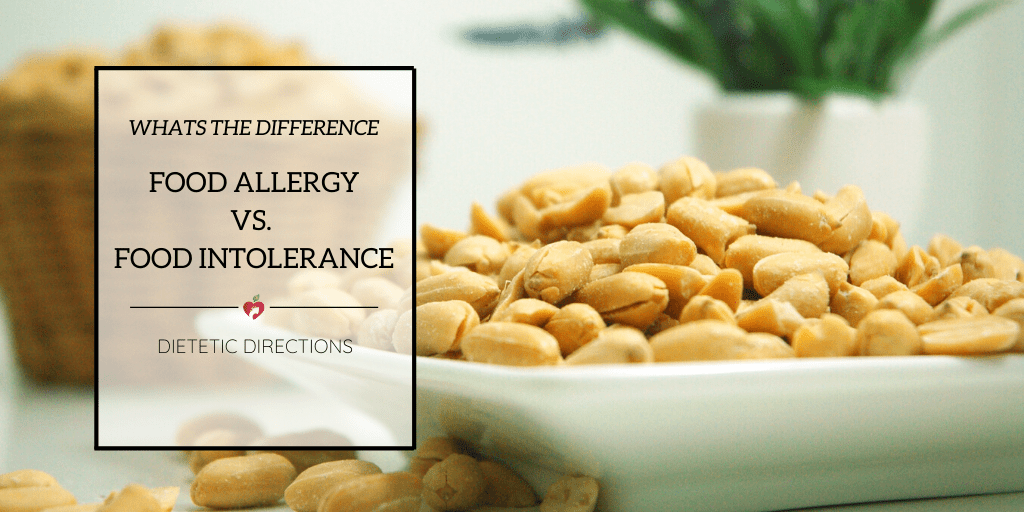
Food Allergy vs. Food Intolerance. What’s the Difference?
In honour ofFood Allergy Awareness month, I will address a very common question. You may have asked yourself,what is the differencebetween afood allergyand afood intolerance? These terms have importantdifferencesand mustnotbe used interchangeably.
What's the difference between a food allergy and food intolerance? Click To TweetWhat is a Food Allergy?
Food allergy occurs when the body’simmune systemresponds negatively to a specific food (known as the ‘allergen’). The offending food is not necessarily harmful, as other people may be able to eat the food without reacting. However, for those withfood allergies, their immune system attacks the unwanted ‘allergen’ causing an immediate and possibly severe reaction.
Prevalence:It is estimated byHealth Canadathat 5-6% of young children and 3-4% of adults have diagnosed food allergies.
Examples of Symptoms: Tingling mouth, hives, swelling of lips, face, tongue and throat, vomiting, cramping or diarrhea.
Note:Symptomsrangefrommildto alife threateningreaction known asAnaphylaxis.
On-set of symptoms:Usuallyimmediateandtiny amountwill trigger a reaction.
Examples of Food Allergies:Peanut allergy, Egg allergy, Milk allergy, Soy allergy, Shellfish allergy, Celiac Disease (symptoms may be delayed and this is not life-threatening).
Diagnosis:Food Allergies are diagnosed by an Allergist (Clinical Immunologist) and involve blood and skin testing.
What is Food Intolerance?
This is a type offood sensitivitywhich occurs when the body hasdifficulty digestingcertain foods leading to symptoms of pain or discomfort. Please note, an allergic reaction isnotinvolved with food intolerance since theimmune systemnotinvolved.
Prevalence:Unknown
Examples of Symptoms:Bloating, gas, cramping, abdominal pain, diarrhea, constipation.
On-set of symptoms: Generally symptoms aredelayedafter food is consumed and alarger amountof the offending food is typically consumed to trigger symptoms.
Examples Food Intolerances:Lactose intolerance (lack of enzyme to digest lactose), Irritable bowel syndrome (body might be sensitive toFODMAPS), or sensitivity to food additives (MSG).
Diagnosis:Trial-and-error with food elimination and re-introduction, which can be done by a Registered Dietitian. Breath Hydrogen tests can be done forlactose intolerance.
Bottom Line:
There areimportantdifferences betweenfood allergyandfood intolerance. If you are navigating a restricted diet or dealing with symptoms of bloating, bowel changes or discomfort, working with a Registered Dietitian can help to ensure you have abalanced diet. Children following a restricted (allergy free) diet should be monitored by a Dietitian during periods of growth and development. Remember to carry an Epi-Pen if you have a severe food allergy.



